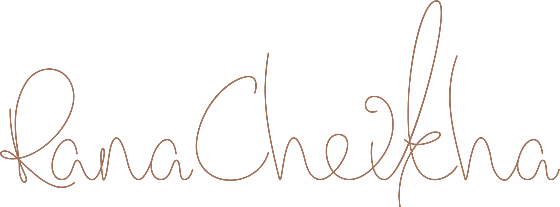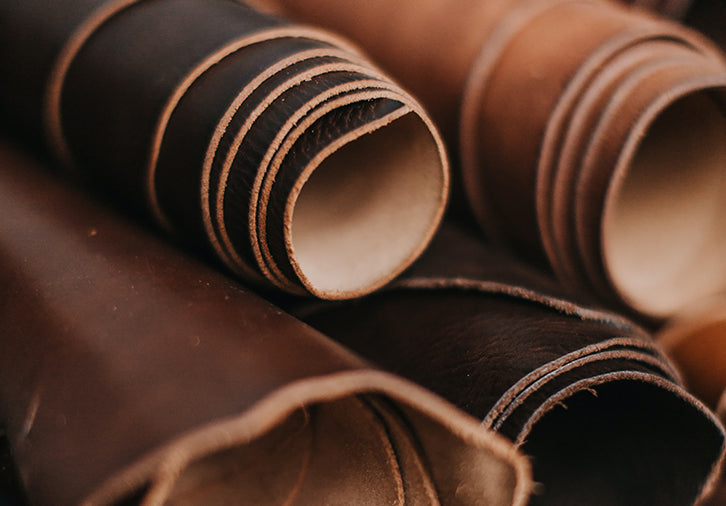Part 1 of this blog, Different Types of Shoe Leathers - Part 1, focused on the different types of calfskin leathers. Although Rana Cheikha shoes are primarily produced of calfskin leathers because of its versatility and luxurious quality, there is an array of different types of leathers available.
Here is an overview of some other types of shoe leather:
-
Cowhide
Cowhide and calfskin are quite similar since they are sources from the same animal. The difference is the age of the cow - cowhides comes from an older animal. Because of this, the leather is more rugged, thicker and more fibrous giving extra strength to the leather and making it a great option for heavy-duty footwear.
Various sub-categories of cowhide also exist. Apache is one such type within the cowhide family. It is treated with wax and oil to create a vintage look and gives is a waterproof quality along with a protective layer that makes it a good option for boots or outdoor shoes. Bullhide is another type, and this skin comes from the shoulder area of the hide. It is very thick and strong and great for protecting your feet outdoors.
-
Pigskin
Pigskin is leather that is sourced from a pig or hog. It has some good qualities such as being flexible with wear and not stiffening after getting wet. It characteristically has a small dot-like pattern that is randomly scattered on the skin and a slightly grainy texture.

-
Shell Cordovan
Shell cordovan is a luxurious leather that comes from the fibrous membrane of the hind quarters of a horse. It is an expensive and rare leather which is available in limited amounts because of the low supply of hides, and also only available in a few colours because of the difficulty in the tanning and dyeing process.
It creates a dense leather that has no visible pores, ripples instead of creases with wear and develops beautiful patina over time. It has a lustrous finish and is durable and water resistant for the most part.
-
Cordovan (Horsehide)
While shell cordovan comes from the hind quarters of a horse, cordovan or horsehide comes from the front part and is tough while being elastic. It is not as luxurious as Cordovan, but still has a smooth characteristic.
-
Buffalo Leather
Buffalo leather (also Bison or Water Buffalo) is a durable leather that is 40% more tensile in strength that traditional calfskin. It is commonly used for bags and boots due to its comfortable and soft touch. It is characteristically porous, with grain and with many natural imperfections on it.
-
Other Suedes
Part 1 of this blog already mentions calfskin suede, but it is important to note that there are many other types of suede. These include:
3a. Cowhide suede that is quite similar to calfskin suede but thicker and rougher,
3b. Nubuck suede that is also cow suede but comes from the grain part of the hide making it more resistant and water repelling,
3b. Pigskin suede which is stiff leather that is not very popular but quite thick and durable,
3c. Sheepskin suede that is smooth, lightweight and the softest type of suede,
3d. and Chamois which was originally made from a kind of European mountain goat called the Rupicapra rupicapra, but these days is made of the suede part of sheepskin. It is soft, porous and water absorbent, so quite often actually used to make cleaning cloths.
-
Patent
Patent leather is used for the most formal type of men’s shoes. In its truest form, it would be difficult to find in colours other than black since its main use is for Black Tie events. Originally, a unique Japanese lacquering process is used to give the leather its unique high gloss finish that is grain-free. Today, the finishing is unfortunately commonly replaced with plastics that gives a similar effect while being much cheaper (and commonly applied on synthetic leather). It is therefore now also available in an array of colours.
Leather can be made of anything that has a skin, and although some might be strange or a-typical to use, some exotics such as alligator, crocodile, camel, deer, eel, elephant and even hippopotamus might strike someone’s interest. It will definitely be worth creating an overview on exotic leathers – so stay tuned for that!
Most importantly, get in touch here if you have any questions about the types of leather used before investing in a pair of shoes from the Rana Cheikha and Wander Collections.
And always remember to use our guides that include How To Identify Real Leather Shoes and How to Fix Scratched Leather Shoes to make sure they’re always looking great!
Signing-off: The Shoe Advisor
// Get in touch here or by email at rana@ranacheikha.com for more insight, queries and information //

